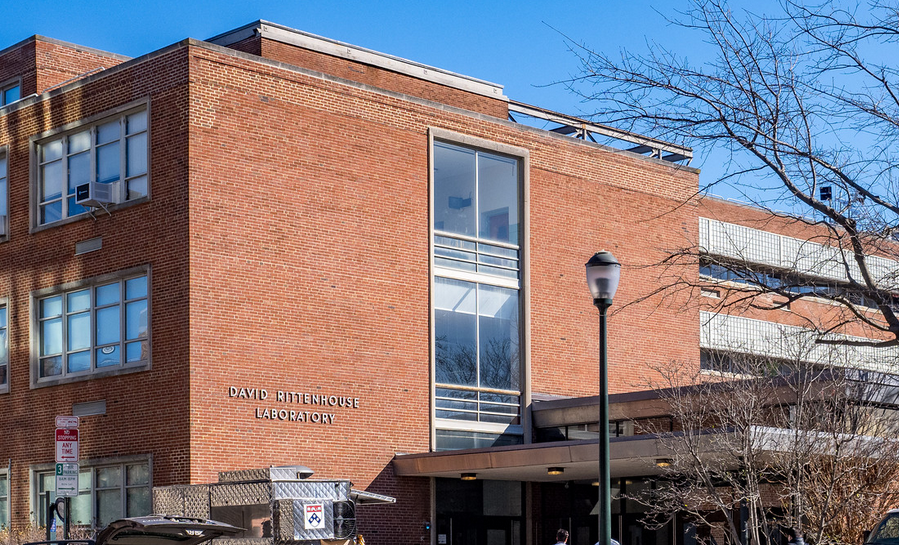
The University of Pennsylvania has two graduate mathematical programs. One is the regular program in mathematics, discussed below. The other is the program in Applied Mathematics and Computational Science, which is more interdisciplinary.
Our graduate program in mathematics offers three degrees: a masters degree (A.M.), a master of philosophy (M.Phil., between the masters and Ph.D.), and a doctorate (Ph.D.). Applications to any of these programs may be submitted in the final year of study in a bachelors degree program in mathematics. More information about the application process is available here.
Courses are offered in both pure and applied mathematics, and it is possible for students to take courses in related departments such as Physics and Astronomy, Computer Science, and Statistics (and even to get a masters degree in a related department, along with a Ph.D. in Mathematics).
Generous financial support is provided to Ph.D. students. Our Ph.D. students serve as teaching assistants in some years and receive fellowships that do not require teaching in other years (including the first year in the program and at least two later semesters). In connection with the assistantship or fellowship, Ph.D. students receive a full tuition scholarship and a 12-month stipend, for five years. In conjunction with their support, Ph.D. students also receive university-provided health coverage.
Students who have graduated from our program have taken jobs in a variety of areas. Many now have faculty positions in colleges or universities, teaching and doing research. Others have taken positions in industry or research labs, in such areas as bioinformatics, robotics, mathematical finance, and computer science. There are currently about fifty graduate students in the Penn Math Department, with a faculty of about forty (plus visiting faculty). Students can work in research areas that include algebra (number theory, algebraic geometry, ring theory), analysis (classical analysis, PDE's, functional analysis, operator algebras), geometry-topology (differential geometry, symplectic geometry, topology of manifolds, applied topology), logic (including mathematical foundations of computer science), combinatorics, probability, and applications such as mathematical physics, medical imaging and mathematical finance.
The Penn Math Graduate Program is structured so as to guide each student, year by year, in the transition from having been an undergraduate to becoming a professional mathematician. During the first year in the graduate program at Penn, students typically take courses in algebra, analysis, and geometry-topology. At the end of that year, students work in groups on mathematical topics of their choice. In the second year, students begin to take more specialized courses and to concentrate on their area of interest. Ph.D. students typically begin work in the area of their thesis after the end of their second year, while masters students typically complete their thesis in the second year. Those who have previously done more advanced work can place out of courses and begin research sooner.
In addition to taking courses, students attend seminars, which are offered in a broad spectrum of topics and levels. Every Friday, there is a Pizza Seminar, open only to students, at which a grad student will present a topic that he or she has found interesting; the Math Department provides pizza and drinks during the talk. Other seminars, open both to students and faculty, include the Department Colloquium, graduate student reading seminars, and advanced seminars specializing in areas such as Mathematical Physics, Geometry-Topology, Analysis, Algebra, Logic and Computation, and Combinatorics and Probability, among others.
Students at the Penn Math Department interact a lot with each other and with faculty. Students regularly work with each other on assignments, on seminar talks, and on research, and talk quite a bit with faculty about mathematics. Interactions take place in seminars, after class, in offices (grad students share offices), in the hallways, and at the daily teas in the Departmental Lounge -- as well as at seminar dinners, at graduate student social events, etc. This helps create a lively atmosphere, in which much of the learning takes place outside of formal lectures (though there are also plenty of those).
The Penn Math Department is located in David Rittenhouse Laboratory (DRL), which it shares with the Department of Physics and Astronomy. Facilities include the Mathematics Reading Room (with a non-circulating mathematical book collection, computers, and pleasant surroundings including lounge chairs and stained glass windows) and the Math-Physics-Astronomy library (a circulating library of books and journals). Adjacent to DRL are Shoemaker Green, an athletic center, the Palestra basketball arena, and the university stadium (Franklin Field). DRL is at the eastern end of the University of Pennsylvania campus, a few blocks from downtown Philadelphia.

 Department of Mathematics
Department of Mathematics